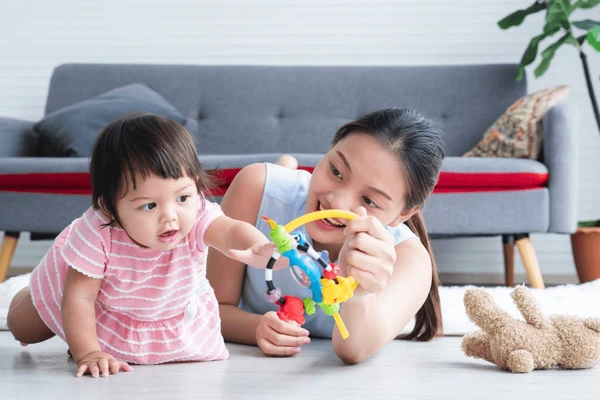Not long ago, I was watching my friend’s four-year-old while she ran a quick errand. To keep him entertained, I brought out a small collection of toys and placed them neatly on the floor. One of them—a bright red toy car that made all kinds of flashy lights and sounds—stood out from the rest. Before I left the room for a moment, I casually said, “Let’s save that one for later.” No scolding, no raised eyebrows, just a soft suggestion.

When I came back, he was happily playing with the other toys. The red car? Untouched. Later, when I asked if he wanted to try it, he just shrugged and said it didn’t look that fun after all.
That interaction stuck with me. Because it mirrored something I’d read years ago in a psychology textbook—a study that has fascinating implications for how we guide children.
The Forbidden Toy Experiment
Back in 1963, researchers Elliot Aronson and J. Merrill Carlsmith designed an experiment that has become a classic in child psychology. Children were brought into a room and shown a set of toys. One toy stood out as the most desirable—think of that red car again.
Then, half the kids were told they would get into serious trouble if they played with the toy. The other half were only given a mild warning. In both cases, the children chose not to play with the toy. But here’s the kicker: when the restriction was lifted and they were allowed to play with anything, the children who had received the mild warning were less likely to touch the toy. Even more surprisingly, they seemed to genuinely think the toy wasn’t that great anymore.
Why Did This Happen?
This is where something called cognitive dissonance comes in. That’s a fancy term for what happens when our actions and beliefs don’t quite match up, and we feel a little mental discomfort.

The children in the mild-threat group didn’t have a strong outside reason to avoid the toy. So instead of saying, “I didn’t play with it because I would have gotten in big trouble,” they had to make sense of their decision in a different way. They told themselves, “Maybe it’s not that fun anyway.”
This kind of thinking helped them feel better about their decision—and in the process, it actually changed their attitude.
What This Teaches Us About Parenting
Many of us grew up hearing things like “Because I said so” or “If you do that, you’re grounded.” We might assume that strong discipline is what keeps kids in line. But what if soft guidance actually works better?
Gentle parenting doesn’t mean letting kids do whatever they want. It means setting boundaries with empathy, offering explanations instead of threats, and trusting that kids can learn to think for themselves.
Real Life, Real Lessons
Take my friend’s niece, for example. She loves to draw, and one day she discovered that the living room wall made an excellent canvas. Instead of snapping at her, her mom gently redirected: “Walls are not for drawing, but I love how creative you’re being. Let’s set up a special spot for your art.” They taped up a big piece of paper on the kitchen wall, and just like that, the issue was solved.
That moment could have gone differently. Yelling might have made her cry or act out. But a soft nudge and a little creativity helped her feel heard and guided her to a better choice.
Why Gentle Boundaries Stick
When children make positive choices without being forced, they’re more likely to adopt those values as part of who they are. That’s the magic of internal motivation.

Here’s another example: forced apologies. If we say, “Say sorry right now or no TV,” the child might mutter the words, but the lesson doesn’t sink in. If instead, we sit with them and ask, “How do you think your brother felt when that happened?” or “What could help fix things?”—we give them space to reflect. That space builds empathy.
Understanding Every Child’s Context
It’s also important to remember that children grow up in different environments. Research has shown that kids from lower-income backgrounds might respond differently to punishment. In one study, harsher warnings actually caused more devaluation of the toy. Why? Possibly because these kids have experienced more restrictions and fewer opportunities. Telling themselves the toy wasn’t worth it might have been a way to cope with being told “no” so often.
This reminds us that we can’t parent in a one-size-fits-all way. Every child brings their own history and temperament. But what we can do—across backgrounds—is meet them with empathy.
How to Use This in Everyday Life
Here are some simple takeaways for applying these ideas at home:
- Set clear boundaries, but stay calm
Instead of threatening consequences, try stating the limit gently and explaining why it matters. - Give them choices whenever you can
Let your child decide between two options, like which book to read before bed or which shirt to wear. Choices build autonomy. - Ask thoughtful questions
Try asking, “What made you do that?” or “How would you feel if that happened to you?” These spark reflection. - Trust the long game
Internal motivation takes longer to build, but it lasts far longer than fear-based obedience. - Celebrate the small moments of growth
When your child puts the cookie back without being told, or says something kind to a sibling, notice it. These are the building blocks of a strong, compassionate character.
Final Thoughts
Gentle parenting isn’t always easy, especially when emotions are high and patience is low. But science—and real life—show us that sometimes, the quietest voices lead to the strongest lessons.
Sometimes, just saying “Let’s save that toy for later” is enough. Not because we’re forcing it, but because we’re giving our kids space to think, feel, and grow. And that space? That’s where the real parenting happens.







